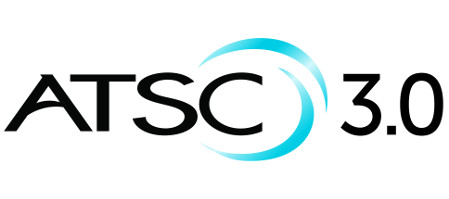FCC To Vote on ATSC 3.0 at November Meeting
WASHINGTON—The television broadcast industry took another important step in its quest to introduce Americans to next-generation television on Thursday, Oct. 26, with the Federal Communication Commission’s release of a Report and Order and Further Notice of Proposed Rulemaking aimed at authorizing a voluntary transition to ATSC 3.0-based over-the-air broadcasting.

“This will open the door to a very exciting future for broadcast television in the United States,” said Advanced Television Systems Committee President Mark Richer.
The commission is tentatively scheduled to take up the R&O and FNPRM at its Nov. 16 Open Meeting.
The Report and Order would authorize ATSC 3.0 transmission on a voluntary basis; require broadcasters choosing to transmit next-gen television to partner with another broadcaster to simulcast ATSC 1.0; require the simulcast channel to transmit “substantially similar” programming (expect for ads, promos for upcoming programs and programming features taking advantage of ATSC 3.0 capabilities) as aired on the ATSC 3.0 channel for five years; maintain mandatory carriage rights on cable and satellite systems for the legacy DTV simulcast but give no mandatory carriage rights to next-gen TV service; and add the ATSC A/321:2016 system discovery and signaling (bootstrap) and A/322:2017 physical layer protocol standards as part of the agency’s rules for the purpose of interference calculation.
Further, the R&O would apply A/322 only to a broadcaster’s primary video stream. The agency would sunset the requirement after five years from the effective rules date unless the agency chooses to extend it.
The sunset provision is the way the agency chose to balance the competing interests of broadcasters, who sought to be free to innovate, and CE companies, which wanted to nail down A/322 to make it certain that consumers buying next-gen TVs will be able to receive ATSC 3.0 signals.
The FCC does not propose to incorporate any other individual standard making up the ATSC 3.0 suite of standards into its rule. At their own choosing, individual broadcasters are free to choose, but not required, to use other standards in the 3.0 suite.
Get the TV Tech Newsletter
The professional video industry's #1 source for news, trends and product and tech information. Sign up below.
The R&O also would exempt LPTV and translator stations from the simulcasting requirement and allow case-by-case waivers if a station has no viable simulcast partner, according to an FCC fact sheet on the agenda item. Additionally, no next-gen TV tuner mandate will be imposed on new TV receivers.
In its FNPRM, the agency will seek comment on exceptions and waivers to the requirement that ATSC 3.0 broadcasters partner with a local TV station to simulcast ATSC 1.0 as well as whether full-power TV stations should be allowed to use vacant TV channels to encourage next-gen TV use. The Further Notice also tentatively will conclude that local simulcasting should not change the “significantly viewed” status of a next-gen TV station for the purposes of cable and satellite carriage.
The proposal applies to a commercial TV station that relocates its 1.0 simulcast channel. These channels would not be allowed to seek significantly viewed status in new communities or counties. Nor would such a station lose significantly viewed status for counties and communities it qualified for before its move to a 1.0 simulcast channel, according to the FNPRM and R&O.

Mark Richer
The Advanced Television Systems Committee is “dotting the i’s and crossing the last few t’s” and expects to have the ATSC 3.0 suite of standards complete by the 2018 International CES in Las Vegas, said Richer.
Both the ATSC A/321 and A/322 are already approved and completed standards.
The FNPRM and R&O reflects a recognition that for the broadcast industry to thrive in the future it must not, by rule, be confined simply to delivery of video programming over the air, said Mark Aitken, VP of Advanced Technology for the Sinclair Broadcast Group.
“It totally leaves open opportunities outside of those seen as traditional TV broadcasting,” he said. “Automotive, IoT [the Internet of Things], broad based alerting and messaging all are possible,” he said.
NAB released a statement from President and CEO Gordon Smith in regards to the FCC ATSC 3.0 proposal:
“NAB thanks Chairman Pai and FCC staff for supporting a new, voluntary transmission standard for broadcast television. Next Gen TV will reinvent free and local TV, offering tens of millions of viewers ultra HDTV, live and local broadcasting on mobile devices, emergency alerting that will save lives and targeted advertising that will grow U.S. jobs and commerce.
“Notably, a transition to Next Gen TV requires broadcasters to use no additional spectrum. Just as American broadcasters led the world in a consumer stampede to high definition television two decades ago, we are ready to usher in a new era of broadcasting that will be pro-consumer and pro-innovation. NAB thanks the bold vision and tireless work of countless broadcast engineers and consumer electronic advocates involved in the ATSC process. We look forward to working with the FCC to ensure that broadcasters have maximum flexibility to bring the historic benefits of Next Gen TV to consumers.”
“This has been a major effort by the industry—a lot of extremely smart people and a lot of investment by the companies who supported those people—to make this happen,” said Richer. “It’s exciting personally, and the members are thrilled about where we are.”
Aitken sees the Nov. 16 agenda item to authorize ATSC 3.0 as a personal career milestone, he said.
“I have been working for this for the last half of my career—since before I came to Sinclair. Getting to this day of authorized a world class television standard is quite gratifying,” he said.
The R&O and FNPRM are available online.
For a comprehensive list of TV Technology’s ATSC 3.0 coverage, see our ATSC3 silo.
(Editor's Note: The story has been updated to include quotes from Mark Aitken of Sinclair Broadcasting Group)
Phil Kurz is a contributing editor to TV Tech. He has written about TV and video technology for more than 30 years and served as editor of three leading industry magazines. He earned a Bachelor of Journalism and a Master’s Degree in Journalism from the University of Missouri-Columbia School of Journalism.

